Eleocharis parvula
Dwarf Spike-rush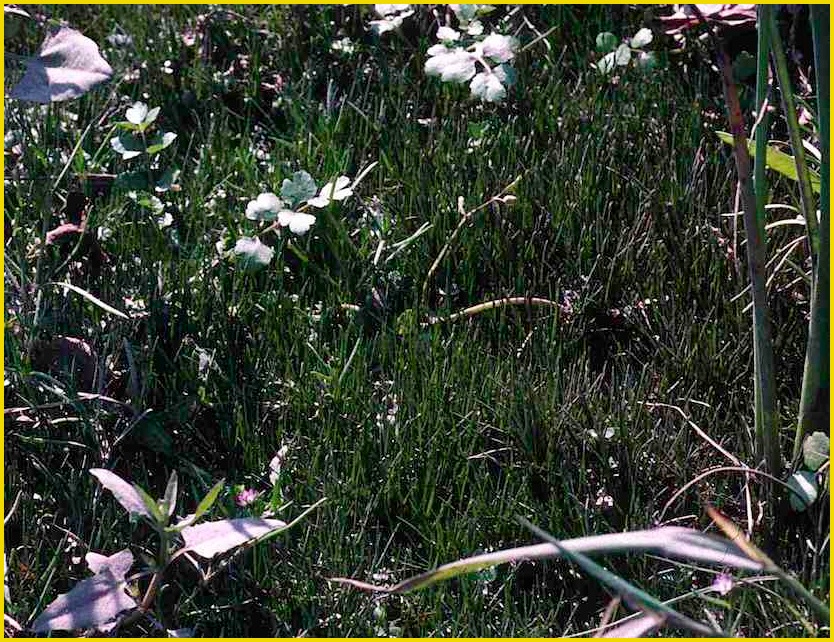
E. parvula, River Avon, Devon, August 1998 (Roger Smith)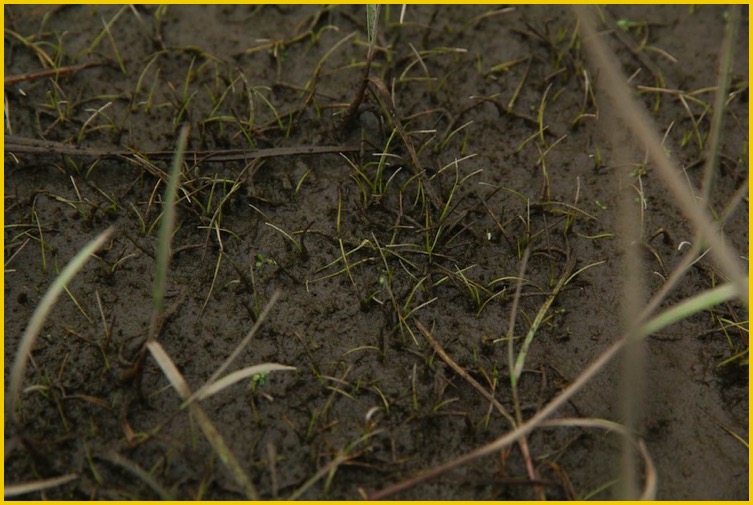
Cromarty Firth, late June
Overview
➢ a very small plant, ‘squatter’ than acicularis, shorter-stemmed, though stems fractionally less thin
➢ patch-forming
➢ spreads by stolons at/near the surface, whitish, and ending in small tubers
➢ often shy-flowering: many populations said to flower rarely or not at all
➢ spikelets tiny, short, and few-flowered
➢ lowest glume encloses base of spikelet, and is at least half as long as spikelet
➢ stigma 3-forked (as in multicaulis and parvula; contrast uniglumis and larger species, 2-forked)
➢ ripe nut smooth (unlike acicularis); style-base tiny, confluent with nut (again unlike acicularis)
➢ very local indeed, on estuary mud only
Growth
➢ makes open or sometimes dense patches; often vegetative only; can make extensive sheets in sheltered bays
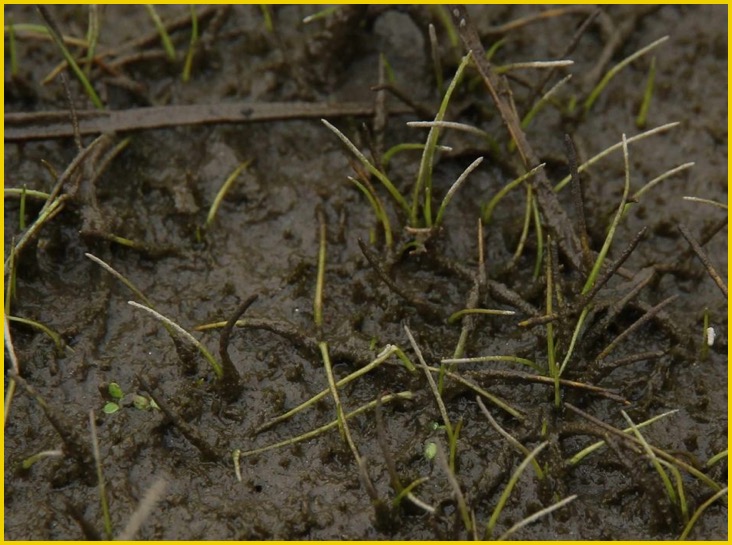
closer view of individual plants, Cromarty Firth
➢ spreads by stolons at/near the surface, whitish, and ending in small tubers: a distinctive difference from acicularis
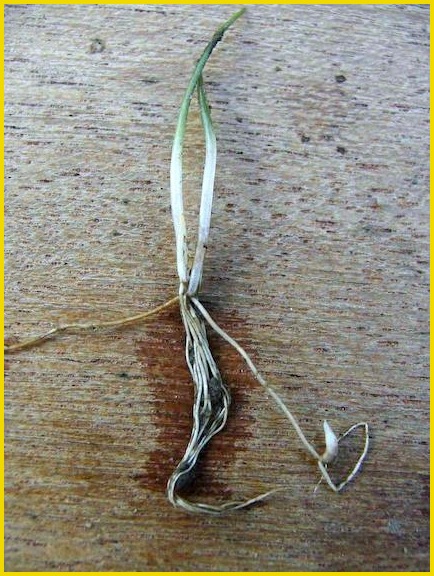
showing stolon with white tuber (above, Robin Walls; below, Roger Smith)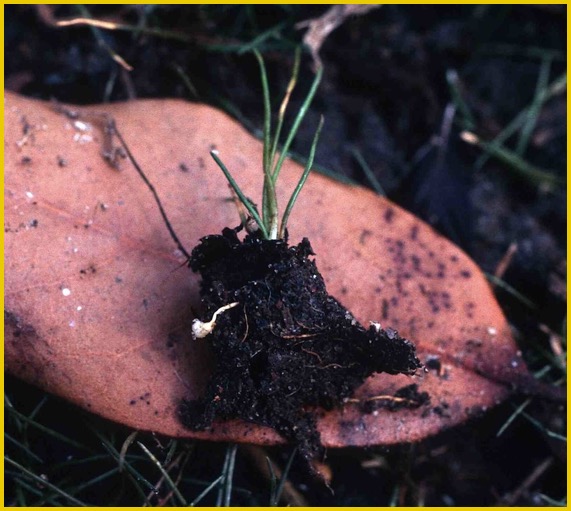
Stems
➢ up to 8 cm but often much shorter
➢ 0.3-0.5 mm wide
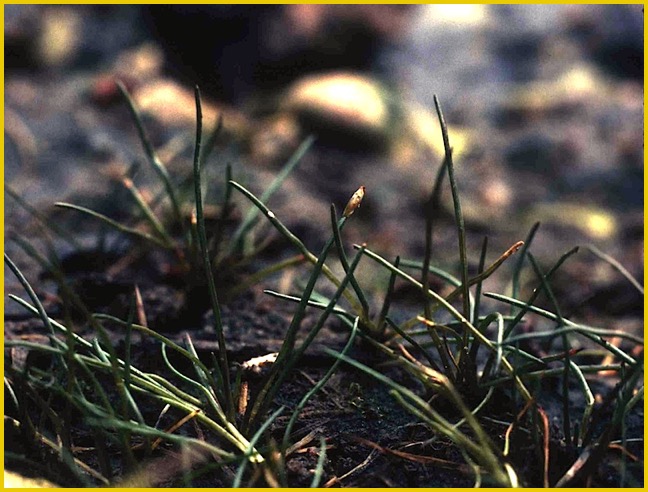
River Avon, Devon, August 1998 (Roger Smith)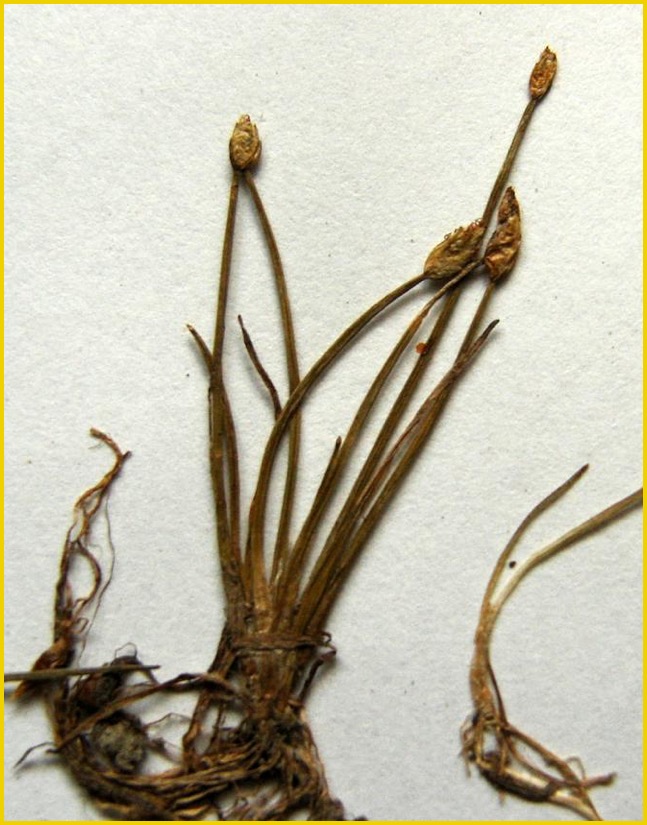
Gwynedd, early September (Robin Walls)
Spikelets
➢ short, ovoid, few-flowered
➢ lowest glume at least half as long as the spikelet, and encloses its base
➢ glumes pale cf. acicularis
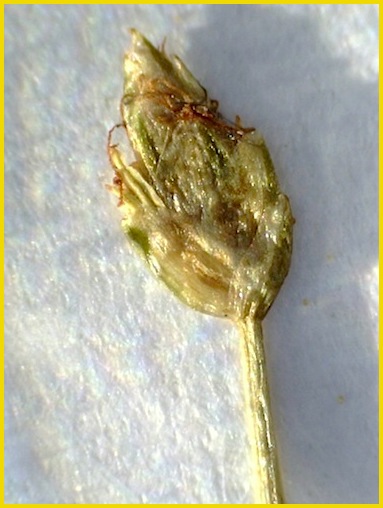
Gwynedd, early September (Robin Walls)
Flowers
➢ stigma 3-forked
➢ perianth bristles (usually) 3, longer than nut
Nuts
➢ small (1-1.4 mm)
➢ style-base (stylopodium) tiny, not swollen, confluent with nut
Habitat
➢ grows only in bare sheltered estuarial mud. Robin Walls informs me that at a site near Christchurch (below) the plant occurs in what must be only slightly brackish water, and is exposed only on low spring tides. Conversely, at Penmaenpool in Gwynedd the site is in small pools at the highest level of the saltmarsh, often dry, and only inundated on spring tides: opposite extremes!

Cromarty Firth near Dingwall; E. parvula abundant on the open mud, with Callitriche stagnalis only associate;
fringing vegetation is E. uniglumis, Triglochin maritima, Bolboschoenus maritimus, Phragmites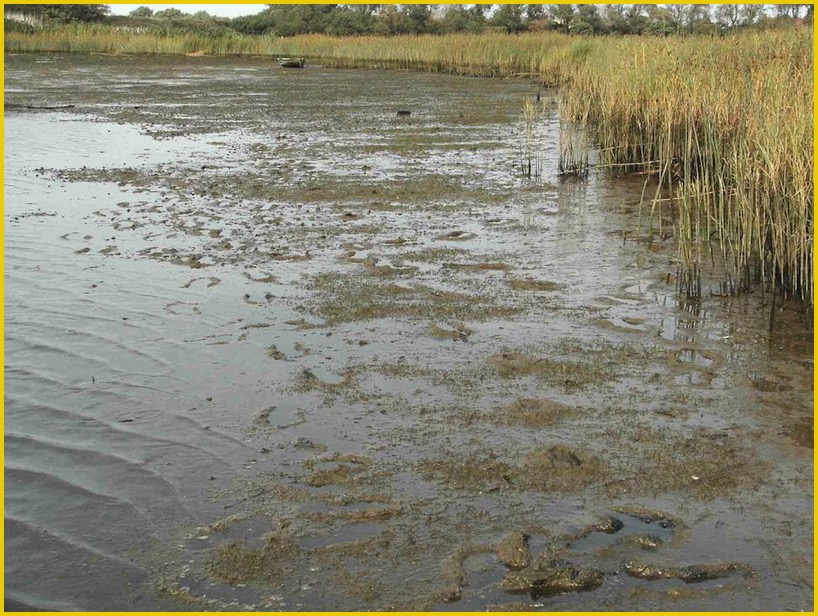
Dorset; E. parvula revealed on bare mud at low spring tide;
fringing vegetation Bolboschoenus maritimus and (beyond) Phragmites
(Robin Walls)
Frequency & range
➢ very localised indeed; some newly-discovered sites far from those previously-known, so perhaps still overlooked. See ⇒distribution map.
Links to the other Eleocharis spike-rush pages (also accessible from the sidebar)
Species pages
Separation of similar pairs
Other information
